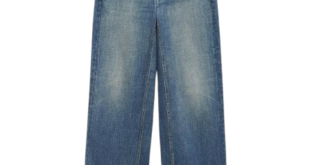When you think of iconic clothing that transcends borders, the Omani dishdasha might not be the first thing that comes to mind. Yet this flowing garment, rich in cultural significance and steeped in history, has woven its way into the fabric of global fashion. From bustling souks in Muscat to chic boutiques in Paris, the dishdasha is more than just a piece of attire; it’s a symbol of heritage adapting to modernity while still celebrating its roots. In this blog post, we’ll embark on an exciting journey across continents to explore how this traditional dress has inspired designers worldwide and transformed itself through various cultures—blending tradition with contemporary flair. Join us as we unravel tales of style, identity, and the universal language of fashion!
Introduction to the Omani Dishdasha
The Omani Dishdasha is more than just a garment; it’s a symbol of tradition, identity, and cultural pride. With its long flowing fabric and elegant design, this attire reflects the rich history of Oman while also showcasing its adaptability in an ever-changing world. As we explore the journey of the dishdasha from its roots in Oman to its influence across various cultures globally, you’ll discover how this simple yet profound piece has woven itself into the fabric of societies far beyond its homeland. Join us on this fascinating exploration as we uncover the global impact and enduring legacy of the Omani dishdasha!
History and Cultural Significance of the Dishdasha in Oman
The Omani dishdasha has deep roots in the cultural fabric of Oman. This traditional garment is more than just clothing; it embodies identity and heritage.
Historically, the dishdasha was worn by men as a symbol of status and respect. The design varies slightly based on region, reflecting local customs and environmental needs.
Crafted from light fabrics suitable for Oman’s hot climate, its long sleeves provide modesty while offering comfort. The pristine white color often signifies purity, though hues may vary during special occasions or festivities.
In daily life, the dishdasha serves practical purposes too. It allows ease of movement for work in agriculture or trade. Wearing this attire fosters a sense of community among Omani men, creating bonds defined by shared traditions.
This garment also plays a vital role in various ceremonies, reinforcing connections to family heritage and national pride.
Global Influence: How the Dishdasha has spread beyond Oman’s borders
The Omani dishdasha, a symbol of tradition, has transcended its geographic roots. Its elegant simplicity and cultural significance have attracted attention worldwide.
In the Gulf region, neighboring countries embraced similar styles, adapting their own interpretations while maintaining the essence of the original design. This cross-cultural exchange highlights shared values in comfort and modesty.
Beyond the Middle East, fashion enthusiasts in places like Europe and North America have started to incorporate elements of the dishdasha into their wardrobes. It appears at various events as a statement piece that honors global diversity.
Social media platforms amplify this influence further. Influencers showcase unique takes on traditional attire, seamlessly blending it with contemporary trends. The result? An evolving narrative around what it means to wear a dishdasha today—an emblem of heritage fused with modernity that resonates across cultures.
Adaptations and Variations of the Dishdasha in different countries
The Omani dishdasha has found its way into various cultures, each putting a unique spin on this traditional garment. In the Gulf region, for instance, countries like Saudi Arabia and the UAE have adopted similar designs but often in different fabrics and colors. These variations reflect local customs and climate.
In East Africa, particularly in Zanzibar, the dishdasha has evolved into a lighter version called the kanga. This adaptation showcases vibrant patterns suited to tropical climates while maintaining cultural ties to Arabian heritage.
Meanwhile, Western designers are increasingly inspired by the dishdasha’s elegance. Fashion runways feature modern interpretations that blend traditional elements with contemporary styles.
These adaptations highlight not just versatility but also how cultures can embrace and modify garments over time while retaining their original significance.
Fashion and Pop Culture: How the Dishdasha has evolved in modern times
The Omani dishdasha has gracefully transitioned into contemporary fashion. Designers are reimagining this traditional garment, infusing it with modern flair. Bright colors and innovative fabrics are now part of the mix, appealing to a younger audience.
Social media plays a pivotal role in this evolution. Influencers showcase their stylish takes on the dishdasha, bridging cultural heritage with global trends. This visibility amplifies its presence beyond Oman’s borders.
Fashion shows also highlight variations of the dishdasha, merging it with high fashion concepts. It’s no longer just a symbol of tradition; it’s becoming synonymous with individuality and modernity.
Movies and music videos featuring artists donning the dishdasha contribute to its rise in pop culture. As celebrities embrace this distinctive style, it garners admiration worldwide, creating new fans who appreciate both its beauty and significance.
The Future of the Omani Dishdasha: Predictions and emerging trends
The Omani dishdasha is poised for a fascinating evolution. As global fashion continues to embrace diversity, the traditional garment may see innovative designs that merge modern aesthetics with its rich heritage.
Sustainable materials are becoming key in fashion worldwide. Expect to see more eco-friendly fabrics used in creating stylish dishdashas, appealing to environmentally conscious consumers.
Digital platforms and social media play a significant role in shaping trends today. Influencers showcasing their unique takes on the dishdasha could spark new styles, broadening its appeal beyond cultural boundaries.
Moreover, as men’s fashion becomes increasingly fluid and less gender-defined, adaptations of the dishdasha might cater not just to tradition but also personal expression. This has potential for exciting collaborations between designers from different cultures.
Cultural exchange through travel will keep influencing how the dishdasha is perceived and adapted globally. It invites dialogue between history and contemporary design while maintaining its essence.
Conclusion: The enduring legacy of the Omani Dishdasha around the world
The Omani dishdasha is more than just a piece of clothing; it embodies the rich cultural identity and heritage of Oman. Its long history reflects the traditions, values, and social norms of Omani society. As it spreads globally, the dishdasha adapts to new environments while retaining its essence.
Across different countries, variations have emerged that honor local customs yet pay homage to their Omani roots. This adaptability showcases how fashion can bridge cultures, creating a tapestry woven from diverse influences.
Modern interpretations in fashion and pop culture highlight the versatility of this garment. Designers are incorporating elements of the dishdasha into contemporary styles, making it relevant for younger generations who appreciate both tradition and innovation.
Looking ahead, we can anticipate further evolution. With globalization connecting people like never before, the future will likely see even greater fusion with other styles while maintaining its unique character.
The enduring legacy of the Omani dishdasha continues to inspire admiration around the world as it transcends borders and time—celebrating not only its origins but also its ability to unite various cultures through shared appreciation for beauty in simplicity.
 The Random Collective Where Curiosity Meets Creativity
The Random Collective Where Curiosity Meets Creativity




